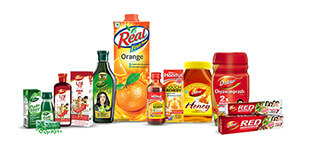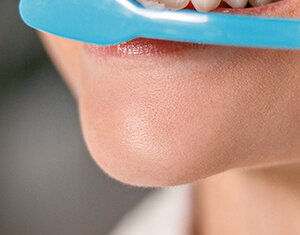Blog
Teeth Stains: Types, Causes, And How To Remove Them
Oral Care

Teeth stains can be a significant concern, impacting both smiles and confidence. With the global teeth whitening market seeing a 34% annual rise from 2014 to 2024, it's crucial to be well-informed about teeth stains, including their types, causes, and effective removal strategies.
Types of Tooth Stains
Tooth discolouration can result from surface stains, actual changes in tooth material, or a combination. Dentists categorise tooth stains into three main types:
1. Extrinsic Stains
These stains happen on the outer surface of teeth and are often caused by staining agents like coffee, tea, tobacco, or wine. Regular oral hygiene practices like brushing can effectively remove these stains. Understanding how to clean yellow teeth will help you choose the right solution.
2. Intrinsic Stains
These stains develop below the tooth's surface and can be caused by ageing, certain medications, or excessive fluoride use. Dentists may address intrinsic stains through bleaching or other stain-removal techniques.
3. Age-Related Stains
Natural ageing processes lead to tooth colour changes as the enamel gets thins, revealing the yellowish dentin from the inside. Maintaining good oral care can slow down this ageing-related discolouration. The earlier you know how to clean yellow teeth, the better it will be for your teeth’s health.
Causes of Stained Teeth
Understanding the causes of stained teeth is crucial for effective prevention and removal. Common causes include:
1. Food and Drink
Pigments in foods like coffee, tea, and berries can adhere to teeth, causing stains. Rinsing the mouth or brushing after consuming these items helps minimise the risk.
2. Oral Care
Poor oral hygiene, including infrequent brushing and flossing, allows plaque and tartar to accumulate, leading to stains. Consistent oral care, including daily brushing and flossing, helps maintain a clean and stain-resistant smile.
3. Tobacco
Smoking or chewing tobacco exposes teeth to harmful substances, resulting in yellow or brown stains. Reducing or quitting tobacco usage improves overall health and prevents stubborn tooth stains. Make sure that you thoroughly understand how to clean yellow teeth.
4. Trauma or Disease
Injuries, infections, or certain diseases during tooth development can lead to intrinsic stains. Consulting a dentist for proper diagnosis and treatment is essential in such cases.
5. Medical Treatment
Some medications, including antibiotics or high blood pressure drugs, can cause intrinsic stains. Awareness of medication side effects and discussing concerns with healthcare providers or dentists is important.
How to Remove Teeth Stains
Effective methods for removing teeth stains include:
1. Brushing Techniques
Brush teeth properly twice daily with quality toothpaste. Opt for a soft-bristled toothbrush to prevent enamel damage while effectively removing surface stains.
2. Flossing Regularly
Daily flossing helps remove plaque and food particles between teeth, preventing the development of extrinsic stains. Using a teeth stain remover along with regular flossing will be highly beneficial for you.
3. Whitening Toothpaste
Choose a reputable whitening toothpaste like Dabur Red Paste, which contains mild abrasives and stain-removing chemicals. Follow the recommended brushing routine to reduce surface stains.
4. Oil Pulling
Incorporate oil pulling into the routine by swishing coconut or sesame oil in the mouth. This natural method helps reduce bacteria and plaque, creating a brighter smile.
5. Teeth Whitening Procedures
Opt for teeth whitening procedures supervised by a dentist, using bleaching agents to target intrinsic stains for noticeable and safe results.
6. Dental Cleanings
Schedule regular dental check-ups and cleanings every 6 months to remove stubborn stains and maintain optimal oral healt h.
7. Limit Stain-Causing Substances
Reduce consumption of stain-causing beverages like coffee, tea, and red wine. Rinse the mouth with water after consumption to minimise potential stains.
8. Quit Tobacco Products
Quit smoking or chewing tobacco to prevent persistent yellow or brown stains on the teeth. Seek support and resources for quitting to improve overall oral health.
Conclusion
Understanding the types and causes of tooth stains empowers individuals to take proactive steps to maintain a bright smile. By incorporating good oral hygiene practices, making lifestyle changes, and seeking professional dental care, one can bid farewell to stains and embrace the confidence that comes with a radiant and healthy smile.
Frequently Asked Questions
Q1. Are stained teeth unhealthy?
Discoloured teeth may indicate cavities and gingivitis, impacting overall dental health. Regular dental check-ups help address these issues.
Q2. How to remove yellow stains from teeth?
Effective methods include rinsing with apple cider vinegar, regular brushing with quality toothpaste, consuming fruits, and vegetables, and adopting a healthy oral care routine.
Q3. What causes stains on teeth?
Tooth discolouration can result from excess intake of tea or coffee, poor oral hygiene, medications, and other factors.
Q4. Can yellow teeth become white again?
Yes, various methods such as teeth whitening toothpaste, home whitening products, and professional procedures can help whiten teeth. You can also use Dabur Red Paste regularly for healthier and whiter teeth. The effectiveness may vary based on individual factors.
Disclaimer: The contents of this article are for informational purposes only and not a substitute for medical advice.
References
https://greensquaredental.co.uk/the-different-types-of-teeth-stains-how-to-remove-teeth-stains/
https://my.clevelandclinic.org/health/symptoms/10958-tooth-discoloration
https://www.naturalsmiles.co.uk/how-to-remove-stains-from-teeth-10-simple-ways/























